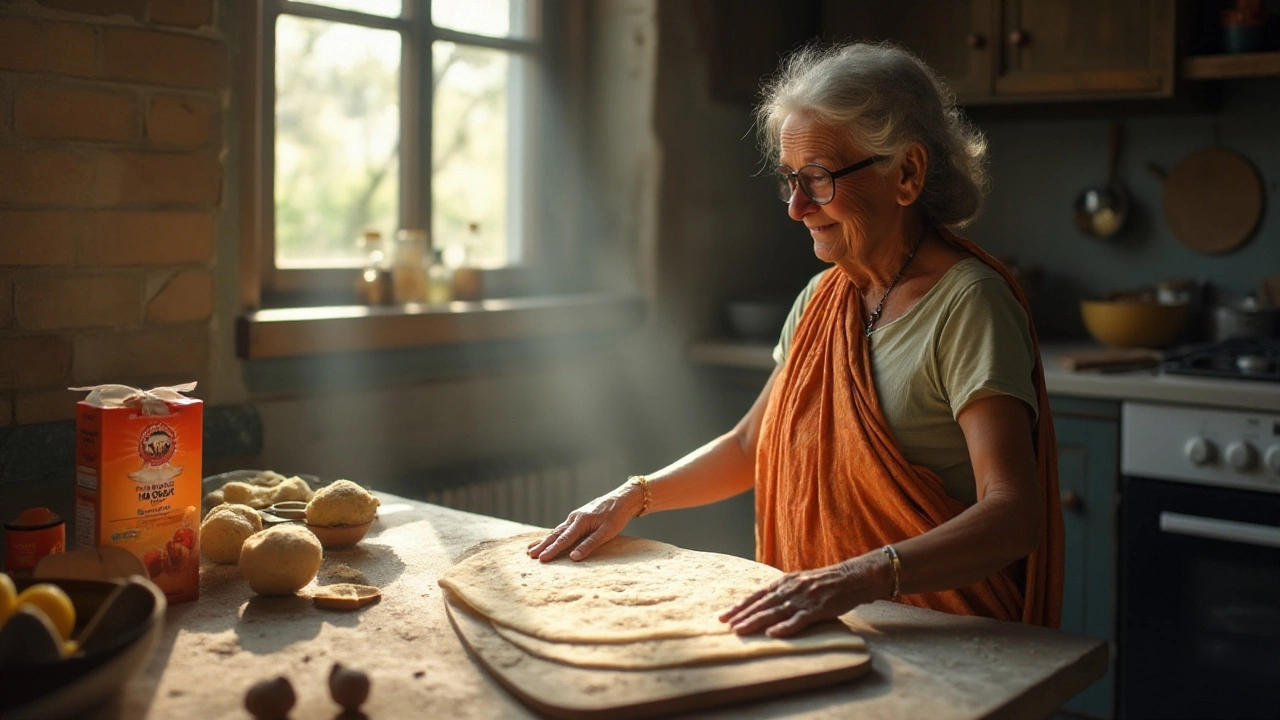Baking Soda in Roti: How to Get Soft, Fluffy Flatbreads
If you’ve ever wished your roti was a bit lighter, a tiny bit of baking soda can be the secret weapon. It’s not a magic powder, just a small leavening boost that helps the dough puff up while cooking. The result? A roti that lifts nicely, feels softer on the bite, and still has that classic whole‑wheat flavor.
Why Use Baking Soda?
Baking soda is a base that reacts with acidic ingredients, releasing carbon dioxide. In roti dough, the natural acidity comes from the wheat flour itself and sometimes a splash of yogurt or lemon juice. When the gas forms, it creates tiny air pockets, making the roti expand a little when it hits the hot pan. The trick is using just enough so the roti stays tender without tasting soapy.
How to Add It Right
Start with a pinch – roughly ¼ teaspoon for a batch of three to four rotis (about 200 g of flour). Mix the baking soda with the dry flour before adding water. This ensures the soda distributes evenly and doesn’t clump. If you like a slight tang, add a teaspoon of plain yogurt or a squeeze of lemon juice to the water; the extra acidity boosts the reaction.
When kneading, aim for a smooth, soft dough. It should feel slightly tacky but not stick to your hands. Let the dough rest for 10‑15 minutes; this gives the soda time to start working and relaxes the gluten, which also helps the roti stay soft.
Heat a skillet over medium‑high heat until it’s hot enough to sizzle a few drops of water. Roll each roti to about 6‑7 mm thickness. Cook for 30‑40 seconds on one side, then flip. You should see tiny bubbles forming – that’s the soda doing its job. Press gently with a cloth or spatula; the roti should puff up a bit.
Don’t over‑cook – a few seconds longer and the roti can become dry. Serve immediately with ghee or butter; the fat locks in moisture and keeps the softness longer.
Common mistakes to watch out for:
- Using too much baking soda – it can give a bitter, metallic taste.
- Skipping the rest period – the dough won’t relax, and the roti can turn hard.
- Cooking on too low heat – the roti dries out before it puffs.
Experiment with whole‑wheat atta or a mix of atta and a little all‑purpose flour for an even lighter texture. You can also try adding a pinch of baking powder along with soda for a stronger rise, but keep the total leavening low to avoid flavor issues.
In short, a pinch of baking soda is all you need to upgrade your roti from flat and dense to airy and soft. Give it a try on your next kitchen session and see the difference for yourself.
The Truth About Using Baking Soda in Roti Recipes
Roti is a staple in many households, cherished for its versatility and wholesome goodness. Many cooks wonder if adding baking soda can enhance the texture of this beloved bread. This article explores whether baking soda is beneficial in roti-making, debunking myths and offering practical advice. Learn about the science and traditions behind roti preparation to help you decide if this ingredient fits your culinary routine.
